Digital Collections
Celebrating the breadth and depth of Hawaiian knowledge. Amplifying Pacific voices of resiliency and hope. Recording the wisdom of past and present to help shape our future.
Hawaiians consider Waineʻe to be doubly sacred: sacred because it is the site of the first stone church built in all Hawaiʻi, and sacred because it is the final resting place of some of Hawaiʻiʻs highest ranking aliʻi. William Richards and Charles Stewart were the first American missionaries to live in Lahaina. They were brought here in 1823 by Keōpūolani (the widow of Kamehameha and the mother of Hawaiʻi’s next two kings: Liholiho and Kauikeaouli). She took care of the two Americans, had homes built for them, and saw to the construction of a temporary thatched shelter in which they could conduct religious services. This grass house was the original Waineʻe “Church.”
In 1827, it was replaced by a two-story stone church, the first of its kind in the islands. This church was 120’ long and 40’ wide, and it could hold a congregation of 3,000 — all packed together on the floor. The building has been rebuilt several times since then: Kauaʻula winds ripped it up in 1858 and 1951; fire ravaged it in 1894 and 1947. Because of all of this bad luck, two changes were made when the church was rebuilt after the 1951 “whirlwind” — it was given a new name, Waiola (water of life), and its main door was repositioned so that it would face, recognize, and welcome the West Maui Mountains and Kauaʻula Valley. Unfortunately, in August of 2023, the church was once again destroyed in a catastrophic wildfire that wiped out much of Lahaina town.

Waineʻe Cemetery is the oldest Christian graveyard in Hawaiʻi. It was established in 1823, probably at the same time as the completion of Keōpūolani’s original thatched church. The Hawaiian chiefs who are buried here include those who were first buried on Mokuʻula island (sometime before the leveling of Mokuhinia pond in 1918) and those who chose to be put to rest directly in Waineʻe’s soil. These aliʻi include:
Keōpūolani
Kaumualiʻi
Harriet Nāhiʻenaʻena
Liliha
Ulumāheihei (Hoapili Kāne)
Kaheiheimālie (Hoapili Wahine)
Kekauʻōnohi
All but one of the Waineʻe Cemetery aliʻi are direct descendants of Kekaulike (the exception is Ulumāheihei who married Kekaulike’s great-granddaughter). If ʻĪao Valley’s Nāpalikapuokākaʻe is the resting place of the ancient line of Maui chiefs from Kākaʻe to Kekaulike, then Waineʻe Cemetery is the final home of Kekaulike’s descendants.
source:
Kīhei de Silva, ʻO Maui nō ka ʻOi - Hālau Mōhala ʻIlima

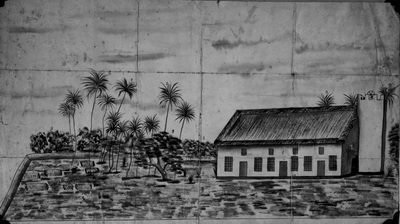
photo courtesy of: Hawaiian Mission Houses
Sketch by Clarissa Armstrong, 1835.
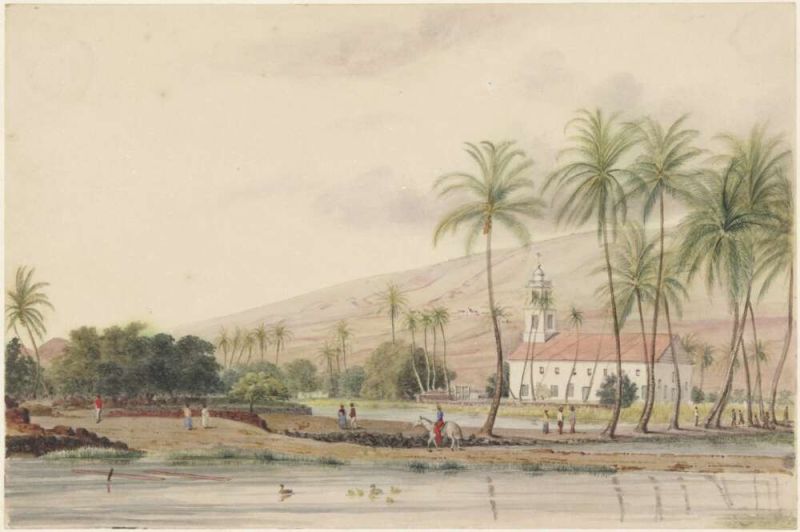
photo courtesy of: National Library of Australia
"The Presbyterian Church, Lahaina." Watercolor and pencil, ca.1851. James Gay Sawkins.
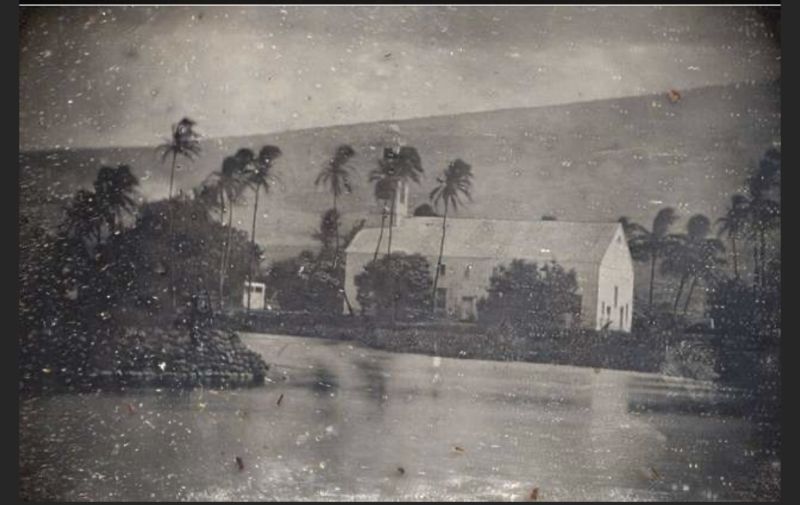
photo courtesy of: Hawaiian Mission Houses
ca.1855. Waineʻe Church as seen from the vantage of Alanui Mōʻī (Front Street). This is the only image of Mokuʻula Island in Mokuhinia Pond from this period.
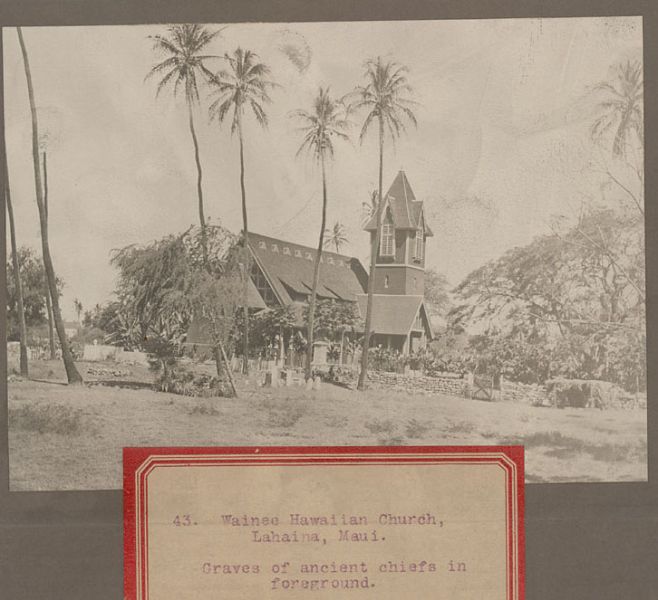
photo courtesy of: Wikimedia Commons
Photo, 1909.
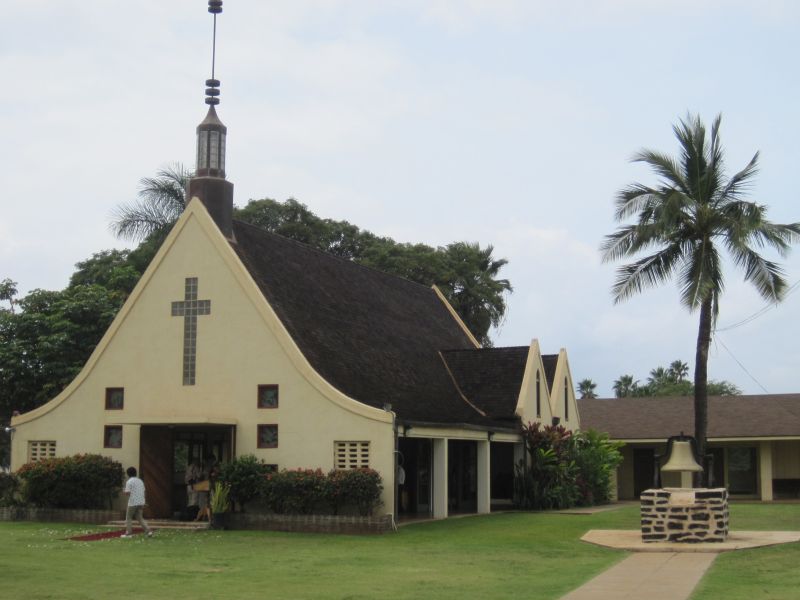
photo courtesy of: Wikimedia Commons